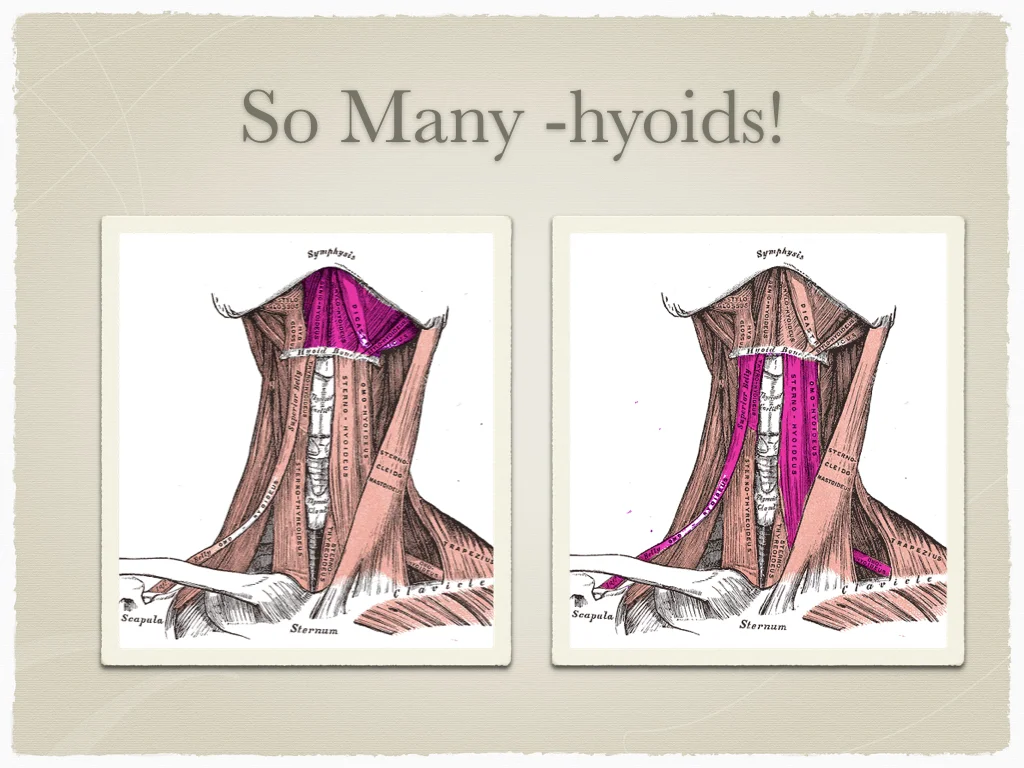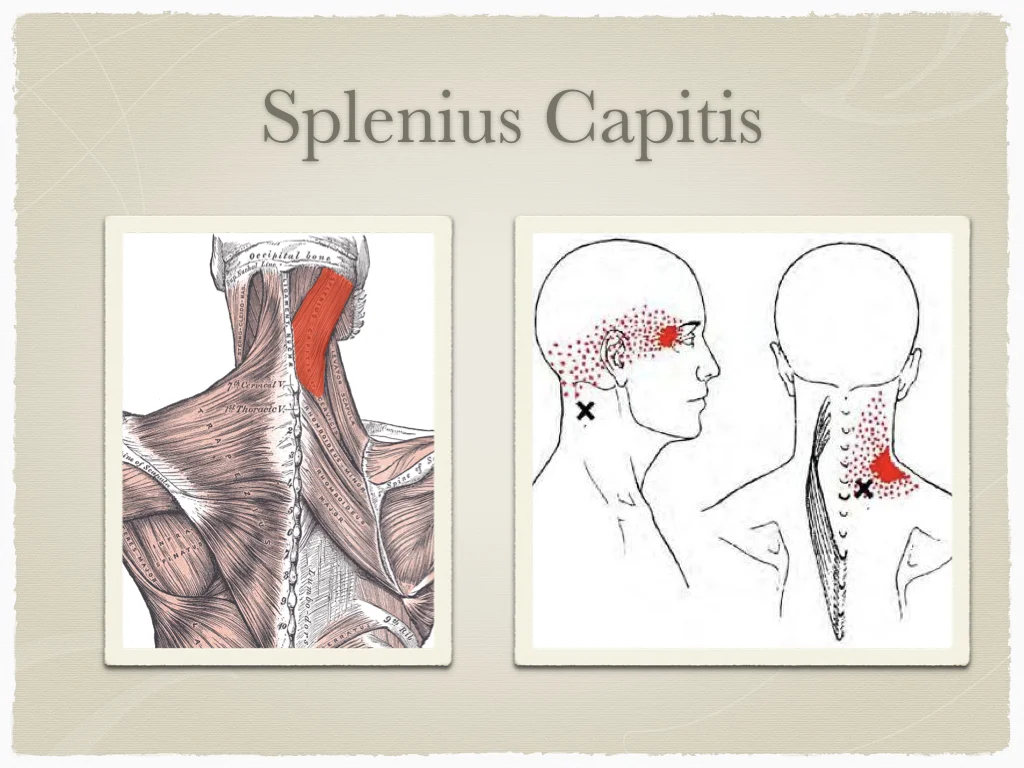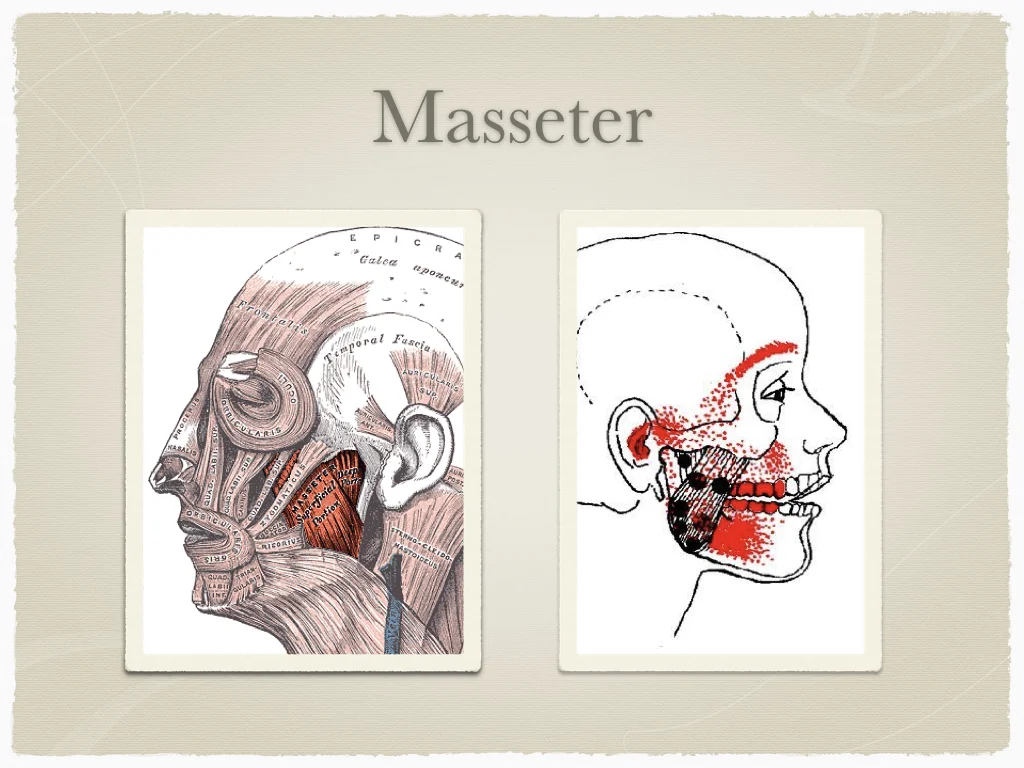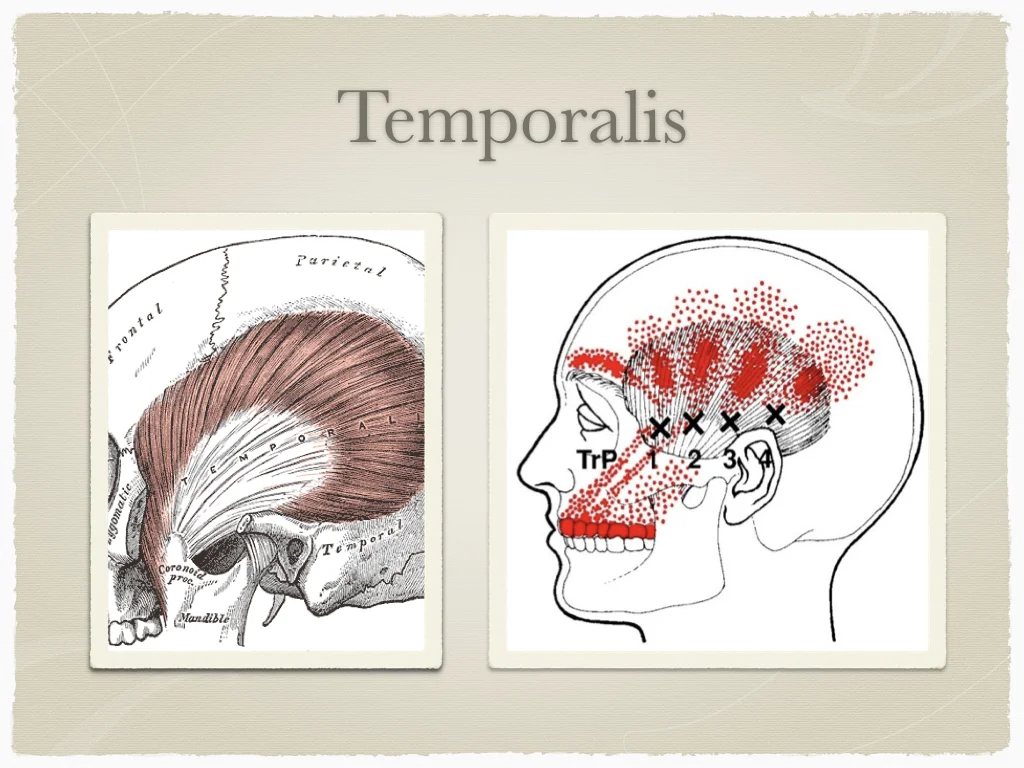Muscle & Referred Pain Diagrams
The diagrams below highlight muscles that we discussed in the ICA session. When they’re misbehaving, these muscles can refer pain to other areas of the body (shown on the right). The red points represent referred pain areas: the more highly concentrated, the more common they are. Click on images to enlarge.
Upper Trapezius
The upper traps are responsible for shrugging the shoulders and for bringing the head downward toward the shoulders. They are also necessary to raise the arms. Common referred pain areas for the upper traps include the lower jaw, behind the ears, and behind the eyes.
Sternocleidomastoid
The sternocleidomastoid has two bundles of muscle fibers: one that connects a part of the skull called the mastoid process to the sternum, and then a second that connects the mastoid process to the clavicle. It is responsible for turning the head to look to the side or over the shoulder. It is also responsible for tilting the head (like a listening puppy). Referred pain areas include the ears and the forehead above and around the eyes.
The -hyoids
Small and numerous, you can feel these muscles stretch when you tilt your head backward. These muscles work together to function in several ways, including supporting the floor of the mouth and depressing the mandible at the TMJ. They are activated when lifting the soft palate, yawning, and swallowing. If you place your fingers under the jawline and then form the embouchure, you’ll easily feel them going to work!
Chin Tucks
No, not the name of a muscle, but this exercise we did in the live session works several muscles: the upper thoracic extensors, the scalenes, the splenius capitis, and the suboccipitals. This is a highly effective exercise that you can easily do multiple times a day. Been sitting for a while? Feeling a headache coming on? Caught yourself slouching? Try doing a few chin tucks!
Splenius Capitis
The splenius capitis is a close neighbor of both the upper trapezius and the sternocleidomastoid. It helps in tilting the head back and also helps in rotation of the cervical spine. Look up at the ceiling or shake your head “no” - that’s the splenius capitis at work. Referred pain areas for this muscle are behind the eyes and at the top of the shoulders/base of the neck.
Masseter
The masseter is a thick, powerful muscle. It is responsible for bringing the mandible upward, or closing the jaw. You use the masseter when you chew, talk, square your jaw, or clench your teeth. Its referred pain areas include the areas right in front of it, the teeth and lower mandible, and right behind it, the TMJ and the ear. Pain can also radiate up to the forehead.
Temporalis
The temporalis is a large, fan-shaped muscle that connects to the exterior of the skull and the interior of the mandible. It is another powerful muscle that assists the TMJ. Look at yourself in the mirror and clench your teeth - you’ll see the section of the temporalis near your temples move. Referred pain from this muscle can feel like a headache or even a toothache.





